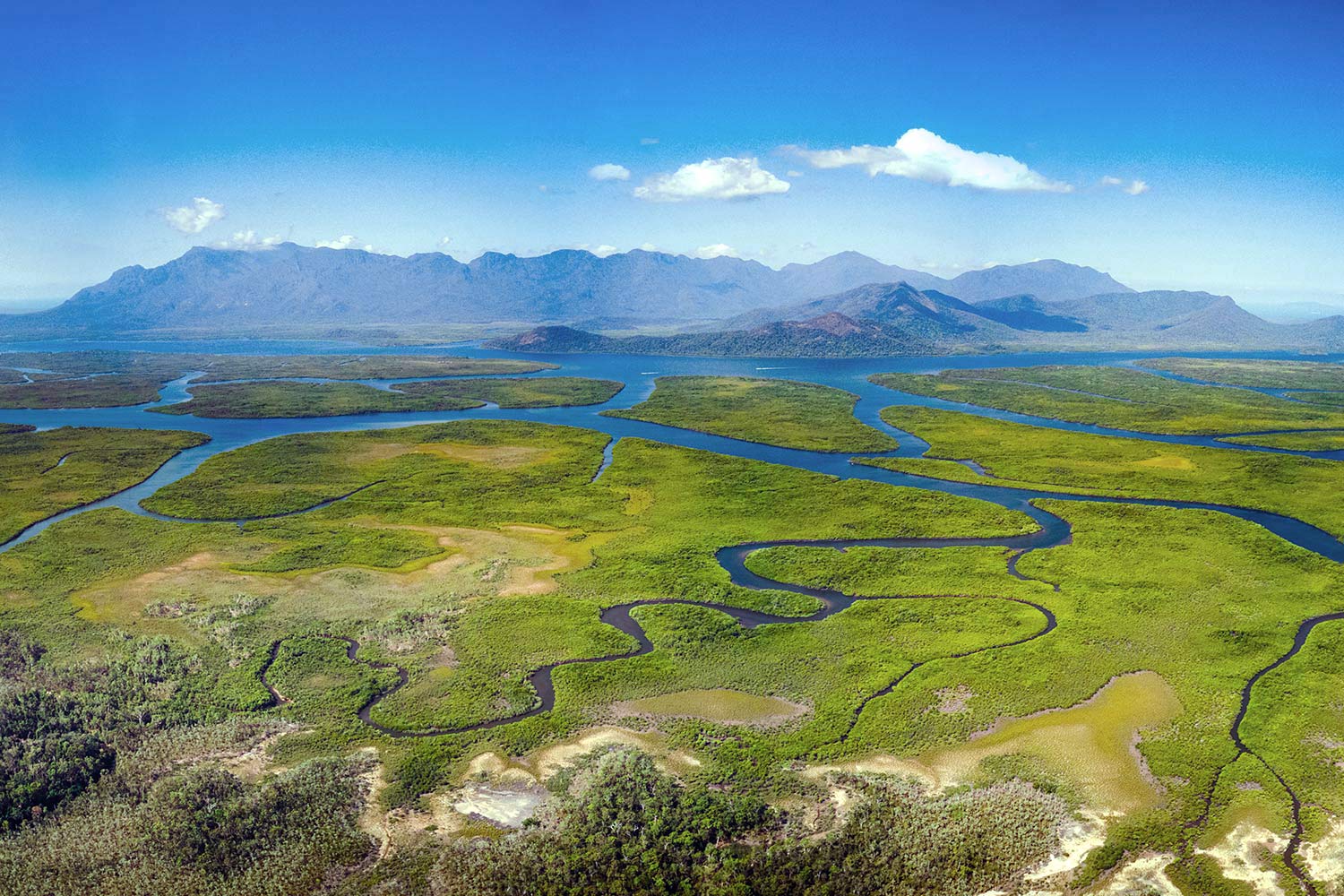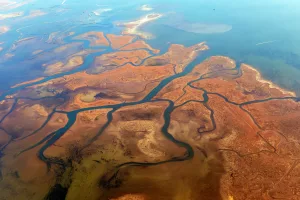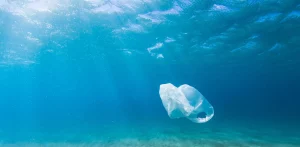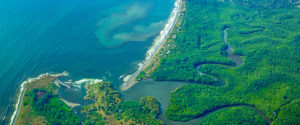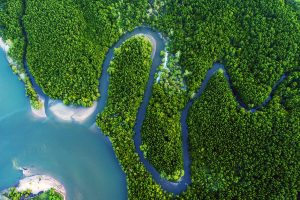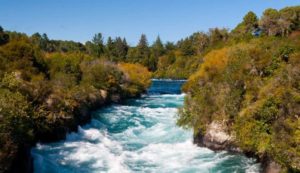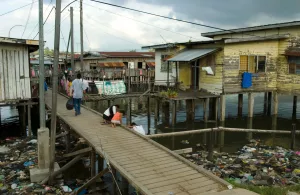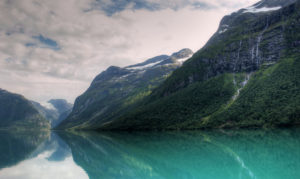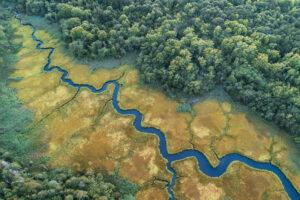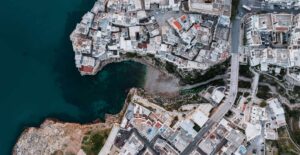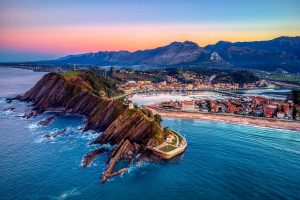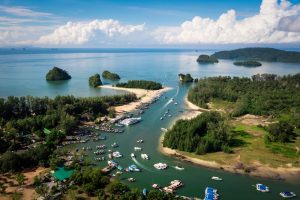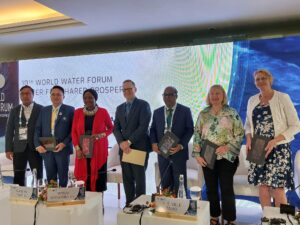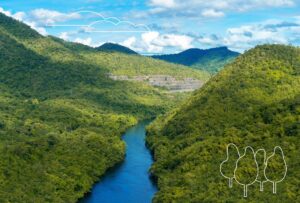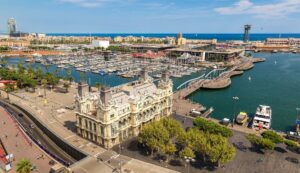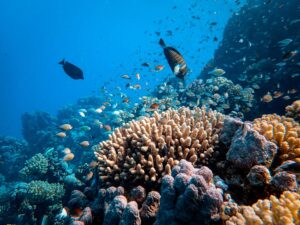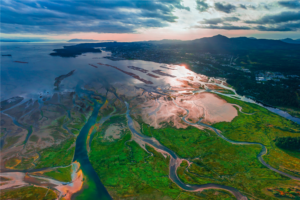Tackling the triple planetary crises of climate change, biodiversity loss, and pollution must start with changing how we understand water. Land, freshwater, coasts, and the ocean are connected through the water cycle, and activities in one place can have impacts upstream and downstream. As the understanding of these linkages develops, we see a growing interest in source-to-sea management.
What do we mean by source-to-sea?
The term source-to-sea helps us understand that the land, lakes, rivers, aquifers, and the ocean do not exist in isolation but are part of a larger system that is linked through the flows of water, sediments, plants and animals, human waste, pollutants, the built environment, and ecosystem services.
Source-to-sea management incorporates these linkages between ecosystems all the way from the mountains to the ocean in both policy and practice. It brings together all sectors and actors – policymakers, the private and finance sectors, scientists, NGOs, local communities, and Indigenous Peoples – to raise their different viewpoints and proactively co-create solutions that build resilient societies within a vibrant natural world.
Unmanaged agricultural runoff and inadequate wastewater treatment continue to cause eutrophication and the expansion of dead zones in our coastal and marine waters. Globally, at least half of all wastewater is discharged without treatment causing ecological damage, health risks and economic loss.
Flows of some rivers are so highly diverted that little water reaches the sea, robbing coastal ecosystems of the water, sediment and nutrients they need. The degradation of freshwater and marine environments has a direct impact on crucial ecosystem services and thereby on livelihoods and food security, particularly for the poorest people.
Connecting the Dots
Much of the pressure we put on ecosystems downstream originates from upstream activities such as land use, urban development, agriculture, energy production, forestry, and industrial activities. Climate change, together with our increasing demand for water, food, and energy, add to the challenge. Only by designing responses based on a source-to-sea approach can we begin to create a sustainable future.
It may sound like a straightforward thing to do, but while the fundamental principle of source-to-sea is indeed elementary, the complexity of taking all the relevant aspects into consideration can be daunting. Competing interests and intricate connections between social, economic, and environmental values are not easily mapped or understood. Actors located far from the sea may not even be aware of the impact their activities have. And even if they are, they may not have the capacity or financial means to address the issue. Many processes, public and private, are characterized by a narrow and short-sighted focus. Source-to-sea priorities, on the other hand, require a holistic approach, multi-stakeholder cooperation, and sustained efforts over long periods of time. That is why strategies for source-to-sea often struggle to make it to the top of political agendas.
Initiating Positive change
At SIWI, we consider the source-to-sea approach a key component of our work, and it is something we are passionate about. In 2014, we launched the Action Platform for Source-to-Sea Management, a multi-stakeholder initiative aimed at finding more effective ways to manage source-to-sea connections. Today, the platform brings together many of the main global organizations in the field, including several UN agencies, river basin organizations and research institutions.
We work intensively to increase momentum, recognition, and funding in order to accelerate the source-to-sea ambitions around the world. We engage in policy processes to raise awareness and facilitate relevant actions. We also provide guidance for investors and practitioners on how to work with source-to-sea management.
SIWI also supports the implementation of the source-to-sea approach: for example, in our pilot projects in Vietnam and Ethiopia. By doing so, we not only contribute to local and regional efforts but also to the global knowledge base around source-to-sea.
Source-to-sea management offers an important alternative that promotes coordination between sectors, across the source-to-sea continuum and stimulates collaboration between upstream and downstream communities.
Why is this important?
Many of today’s greatest problems are the unforeseen results of actions that did not consider upstream and downstream connections. Massive damming and diversion of rivers contribute to the sharp decline in aquatic biodiversity. Greenhouse gas emissions spike when wetlands are turned into farmland. Oceans are polluted by untreated wastewater from cities.
These impacts have significant repercussions for those dependent on freshwater, coastal, and marine ecosystems for livelihoods and basic sustenance. Ultimately it affects all life, on land, in rivers, and the ocean. But today’s governance systems are often too fragmented to handle the pressing challenges the world faces.
One reason is our tendency to work in silos – to focus on just a single issue, sector, location, or solution. If we ignore the upstream and downstream linkages between ecosystems, there is a great risk that economic development in one part of the source-to-sea system will be at the detriment elsewhere, causing growing water and climate insecurity, biodiversity loss, and threats to ocean health.
Source-to-sea management offers an important alternative that promotes coordination between sectors, across the source-to-sea continuum and stimulates collaboration between upstream and downstream communities. By taking a holistic view of the source-to-sea system, actions taken can benefit all parts of the source-to-sea system, across the whole water cycle.
How can source-to-sea management help?
Source-to-sea management is a game changing holistic approach to addressing challenges that are felt in more than one location or by more than one sector. By bringing together upstream and downstream stakeholders and stimulating coordination between sectors to address these challenges, it is possible to find sustainable and lasting solutions that create social, environmental, and economic benefits across the source-to-sea system. The goal of source-to-sea management is to get people working together so that we can receive the benefits of a healthy source-to-sea system.
What challenges can it address?
Source-to-sea challenges cross the land, freshwater, coastal, and marine boundaries and can only be addressed through collaborative action. Some examples that can benefit from source-to-sea management are:
- Ocean health: The ocean is in far greater peril than most people are aware. Humans have put unsustainable pressure on the world’s oceans and that creates enormous risks for us and for all present and future life on Earth. To restore and protect ocean health, collaboration and coordination must take place across the source-to-sea continuum.
- Climate change: Healthy ecosystems provide invaluable services for climate mitigation and adaptation, but nature-based climate action must consider the linkages between land, freshwater, coastal, and marine ecosystems to achieve the greatest system-wide benefits. Source-to-sea perspectives must be mainstreamed into climate plans and strategies at subnational, national, and international levels.
- Biodiversity loss: Freshwater ecosystems are the hardest hit by the current biodiversity crisis with around 80 percent of freshwater species lost since the 1970s. The current rate of wetland loss is three times that of forest loss. Much of this occurs due to the failure to see the interconnected nature of aquatic ecosystems and the benefits they supply to society. The integrated approach embodied in source-to-sea management underscores the importance of biodiversity and healthy ecosystems by highlighting the interconnectedness between human and natural systems from land to freshwater, coastal, and marine ecosystems.
- Plastic pollution: Approximately 8 million tonnes of plastic enter the ocean every year, mainly from land-based sources. By addressing multiple sources of plastic, stressing the linkages across the source-to-sea system, and engaging parties across the entire value chain, source-to-sea management is a valuable approach for the prevention of plastic pollution. Source-to-sea management combined with transforming the production and consumption system from linear to circular can keep plastic out of rivers and the ocean.
What steps are needed for source-to-sea management to be adopted?
For source-to-sea management to take hold, to break out of silos and address development challenges holistically, the following steps are needed:
- Incentivise and implement holistic management of land, freshwater, coastal and marine ecosystems that addresses anthropogenic crises and enables sustainable development through collaborative action on shared challenges at international, national, and sub-national levels.
- Catalyse source-to-sea action at global, regional, national, and subnational levels by mainstreaming source-to-sea thinking in the design and implementation of projects, plans, governance arrangements and investments.
- Foster inclusive decision-making processes, ensuring that the voices and concerns of marginalized and vulnerable communities, youth, women, and Indigenous Peoples are heard at all phases of policy making, and benefits are shared equitably.
- Stimulate increased investment in science, education, knowledge sharing, data, and monitoring to better understand the linkages across the source-to-sea continuum and ensure development on land and along rivers safeguards healthy marine and coastal ecosystems and protects livelihoods dependent upon ecosystem services.
- Accelerate the transition towards sustainable consumption and a circular economy by developing governance tools that facilitate cross-sectoral behaviour change, coordination, and upstream-downstream cooperation in identifying solutions at the source.
- Innovate transformative, replicable, and scalable solutions that address source-to-sea challenges while enhancing livelihoods, ensuring equity, harnessing collective knowledge and sustaining ecosystems.
How can SIWI help?
It may sound like a straightforward thing to do, but while the fundamental principles of source-to-sea are indeed elementary, breaking out of silos, coordinating across sectors, devising collaborative action plans, require a change from doing business as usual. SIWI is the leading source-to-sea expert and can support the transition to this holistic management approach.
SIWI has developed guidance on developing a shared action plan, a framework for preventing plastic pollution, and have identified accountability for stopping plastic pollution by public, private and civil society actors. We have put forward recommendations for incorporating source-to-sea perspectives in urban and regional planning, transboundary water cooperation, climate, and ocean action. We also support the implementation of the source-to-sea approach: for example, in our pilot projects in Vietnam and Ethiopia. By doing so, we not only contribute to local and regional efforts but also to the global knowledge base on how to implement source-to-sea management.
Furthermore, SIWI hosts the Action Platform for Source-to-Sea Management (S2S Platform) a multistakeholder initiative that brings together government, international organizations, academia, the private sector and civil society to accelerate the adoption of source-to-sea management.
The S2S Platform strengthens partnerships for peer-to-peer learning and joint action, grows understanding of the need for and benefits of source-to-sea management, builds commitment to source-to-sea action and increases action on the ground. The S2S Platform was launched in 2014 and welcomes organizations that are committed to holistic management of land, freshwater, coasts, and the ocean.
